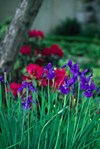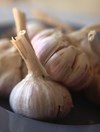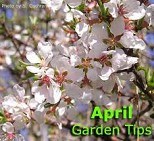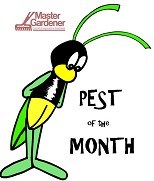Posted 1/8/2013
In case you did not know, the Dishwasher Detergent and Nutrient Runoff Law was signed into law by New York State Governor Patterson on July 15, 2010. The law is in effect on January 1, 2012.
The law provides regulation over fertilizers, their sale and use. Highlight include:
- Prohibit the use of phosphorus-containing lawn fertilizer unless establishing a new lawn or a soil test shows that the lawn does not have enough phosphorus.
- Prohibit the application of lawn fertilizer on impervious surfaces and require pick up of fertilizer applied or spilled onto impervious surfaces.
- Prohibit the application of lawn fertilizer within 20 feet of any surface water except: where there is a vegetative buffer of at least 10 feet; or where the fertilizer is applied by a device with a spreader guard, deflector shield or drop spreader at least three feet from surface water
- Prohibit the application of lawn fertilizer between December 1st and April 1st
- Require retailers to display phosphorus containing fertilizers separately from non-phosphorus fertilizers and to post an educational sign where the phosphorus-containing fertilizers are displayed.
Please note: the law DOES NOT impact agricultural fertilizer or fertilizer for gardens.
Penalties are not to exceed $500 for the first violation and not to exceed $1,000 for each subsequent violation. See the DEC website at http://.dec.ny.gov/chemical/298.html or http://www.dec.ny.gov/docs/water_pdf/lawresphos.pdf for more information on the requirements and what to look for when purchasing fertilizers.
Posted 1/1/2013
Herbs make a great addition to a garden but they can also be grown indoors as year-round houseplants or just during the winter months to protect tender herbs such as rosemary (Rosmarinus officinalis) or basil (Ocimum basilicum). Herbs grown indoors offer many benefits including fragrant foliage, various foliage colors and shapes, a constant supply of herb leaves for cooking and continual leaf production after the outdoor growing season has ended. If you will be growing herbs for their leaves, make sure that enough are grown to supply ingredients for your favorite dishes.
Not all herbs will grow well indoors because their root systems require rather large containers. Examples of herbs that grow well indoors include: Chives (Album spp.), Horehound (Marrubium vulgare), and Winter savory (Satureja m on tana),
Examples of herbs that do not grow well in containers include: Horseradisyh (Armoracia rusticana), Fennel (Foeniculum vulgare), and Lovage (Levisticum officinale)
Herbs, like many houseplants have certain requirements to grow indoors. However, unlike common houseplants, herbs need conditions to be just right for optimum growth or their health will rapidly decline.
Posted 12/12/2012

Can you think of mistletoe and holly without thinking of Christmas? I can’t. Buy many of the plants associated with the holiday season played roles in ancient legends and rituals long before the advent of Christmas. As Christianity gained a foothold, plant lore changed to reflect Christian symbolism and teachings. Many holiday plants originally share the same symbolism; they were part of winter solstice celebrati9o0ns. Winter solstice is the shortest day of the year. On or near the solstice, ancient peoples celebrated the return of longer days and asked the gods to bestow them with the fortitude to survive the harsh winter. For Romans, December 17-24 was the season of Saturnalia, a seven-day festival in honor of Saturn, the god of agriculture. Romans worshipped Saturn by exchanging gifts, lighting candles, decorating areas with evergreens and hanging wreaths. Holly sprigs, thought to repel even spells and lightning, were sent to friends.
Evergreens like mistletoe and holly were often thought to be sacred because of their everlasting green and were brought indoors to give the family strength. Europeans believed that evergreens harbored woodland spirits searching for shelter. By bringing evergreens inside, they believed they were offering the spirits a safe haven.
Mistletoe probably has more Christmas legends behind it than any other plant. The Druids, who called the mistletoe ‘allheal’, believed that the plant was a harbinger of health and good luck. Both were bestowed on people who kissed while beneath it. In time, the church claimed mistletoe for its own, teaching that the plant represented Christ as the divine healer.
Holly also has a place in Christian teachings. In Scandinavia, holly is referred to as Christ-thorn”. Another common belief is that holly berries were white before being stained by the blood of Christ. Vikings, on the other hand, are responsible for the Yule log. At their solstice feast, named Yuletide, they burned fires as a rite to insure good crops. Embers from the Yule log were saved to kindle the following year’s fire.
Christmas tree, too, have ancient ties. Some scholars say that Christmas trees evolved from the time when Celtic priests decorated oak trees with apples to affirm life. During Saturnalia in Rome, evergreen trees were decorated with candles in praise of the god of light.
Later during the 1500s, a popular Christian mystery play performed during December told of the fall of Adam and Eve. Stage scenery featured a Tree of Life, usually a decorated evergreen. According to the story, the Tree of Life, which stood in the Garden of Eden, had broad leaves and blossoms until Eve ate of its fruit, at which point the leaves were reduced to needles.
Holiday plant legends abound. Holly, mistletoe and evergreen trees and shrubs are a few among the many plants that bear symbolic connections to the season of joy, prosperity and fellowship. As you deck your halls this year, take delight in all the tradition and lore your trimmings bring into the home.
By Margaret Pratt Hagen, Extension Educator, Agricultural Resources,UNH Cooperative Extension
Posted 11/15/2012
For many, planting a live Christmas tree into the landscape after the holidays has a special appeal. If you are considering a live tree for Christmas, proper preparation and care of the tree are essential. Transplanting success can be increased by following the steps out lined below:
-Choose a suitable planting site for the tree in fall. The site should provide adequate space for the tree to grow and develop.
-Prepare the planting site in fall before the ground freezes. Remove the soil and place it in a location where it will not freeze. Fill the hole with straw.
-Select a small, container-grown or balled and burlapped tree from a local nursery or garden center. A small tree has a much better chance of survival when planted outdoors. A small tree is also less expensive and easier to handle. (The size and weight of a large tree can make lugging the tree into the house and through doorways a real challenge.)
-Store the tree in a cool garage, shed or porch if it is purchased two or three weeks before Christmas. Make sure the soil is kept moist but does not freeze.
-Place the tree in a tub or large saucer when brought indoors to prevent damage to carpets or hardwood floors. Set the tree in a cool location within the home. Avoid sites near heat sources, such as a fireplace, registers, etc.
-The tree should be kept indoors for only a short period. The shorter the tree’s stay indoors, the better its chances of survival when planted outdoors. The maximum stay indoors should be seven to ten days. If the tree is kept indoors for a longer period, the tree’s buds may break dormancy. When planted outdoors, the succulent new growth will be killed by cold temperatures.
-Carefully decorate the tree with ornaments, garland and lights (preferably the miniature types.) Don’t apply flocking or artificial snow to the tree.
-Keep the soil moist throughout the tree’s stay indoors. Check the soil daily and water as needed.
-Shortly after Christmas, remove the tree from the house and place it in a cool location (Don’t place the tree directly outdoors. The sharply colder temperatures outdoors may injure the tree.) A short stay (several days) in a cool garage, shed, etc., allows the tree to become gradually acclimated to cooler temperatures. The soil should not be allowed to freeze during this period.
-On a mild winter day, remove the straw from the planting area and plant the tree outdoors. Water well and mulch the area heavily to prevent the soil from freezing immediately.
You should carefully consider the requirements and risks associated with a live Christmas tree. An evergreen can be successfully planted outdoors after the holidays, however, proper site preparation and good tree care are essential.
Posted 11/1/2012
by Crystal Stewart
Amaryllis bulbs are sold after they have gone through a dormant period. Once the bulb is planted and watered it will quickly begin to send out leaves and one or more flower stalks. The key to success with these plants is selecting a quality bulb. If buying from a garden center or flower shop, you may be able to select the bulb from a bin. Look for large, firm bulbs with light brown roots. If you are buying a pre-potted plant it can be harder to tell the quality of the bulb. If you can get to the bulb, check for firmness and note the size of the bulb. If you can’t see the bulb, remember that as a general rule bargain bulbs will be smaller and will yield fewer flowers.
Posted 11/1/2012
Just in time for holiday decorating or giving!
Cornell Cooperative Extension Master Gardeners Mary Ann Charon and Joan Eckler will teach you how to construct your own wreaths during this hands-on workshop. Instructors will demonstrate and participants will make two wreaths—one pinecone wreath and one balsam wreath. All materials will be supplied.
Choose from 2 class times and locations: Tuesday, November 27, 6:00 p.m., Cornell Cooperative Extension Center, 50 East Main Street. Lower Level, (United Methodist Church), Canajoharie or Thursday, November 29, 6:00 p.m., Shirley J. Luck Senior Center, 109 East Main Street, Johnstown. Class size is limited to 15 participants—Register by November 16 (a minimum number of participants is required to hold the class.) Cost is $20 per person payable at registration. To register: Call Cornell Cooperative Extension in Fulton and Montgomery Counties, 518-673-5525 ext 101.
Posted 10/30/2012
by Deborah Smith-Fiola, Rutgers Cooperative Extension

Spiders are unfairly criticized animals. They have been victimized by a few poisonous species, condemned when found around the home and demonized at Halloween. However, spiders are finally gaining recognition as important beneficial predators of insect pests in the landscape as well as in farms, orchards and forests.
The fear of spiders (e.g. the ‘Little Miss Muffet Syndrome’) is usually a learned response from others, often learned in childhood. Most spiders are shy animals that run away from humans. The vast majority pose no danger at all. Even the poisonous spiders – notably the black widow and the brown recluse – are not aggressive and frequent undisturbed area. Spiders only bite people in self-defense or when defending their eggs. In fact, research shows that spiders are often blamed by bites caused by fleas or other pests.
Many people notice an influx of spiders around the home in the fall. This is the time of year that some species mature. Mating must take place in order for egg laying to occur before the adults are wiped out by freeing temperatures. Many male spiders during this time leave their normally protected shelters to venture about in search of female spiders. Yes, they may walk near you but spiders have dreadfully poor eyesight and probably don’t realize that they are near you. If found indoors, just scoop them up and usher them outdoors! Use a broom to direct the spider toward a doorway or invert a large jar over it and slide a piece of paper under the mouth of the jar to trap the spider within and then release it outside.
Posted 10/17/2012

Maybe you've had your houseplants on your deck or patio for the summer or perhaps they have remained in the house. Either way, paying attention to their needs in the fall can help ensure their winter health.
-
Begin a regimen of taking your houseplants to the shower for a monthly rinse. This is one of the easiest ways to prevent infestations of aphids and white flies. Be sure to rinse the undersides of the leaves as well. Do not do this, however, on fuzzy leafed plants such as African Violets.
-
Stop feeding houseplants now. They will enter a rest period as the daylight shortens.
-
Mid October is the time to start the winter darkening process for poinsettias if you want them to develop the red bracts for holiday time. Starting around October 15 place your poinsettia in a dark room at night for 14 hours. Really dark - no light coming in from under a closet door, no reflected street lights, no night light. In California where many of these are grown, some security personnel are not allowed to use flashlights because one stray beam can throw off the process. After 14 hours bring the plant out to where it gets good light and continue to water. Continue this process for 40 days and then leave in the bright light and the bracts will start to turn red. They will not be as big as the plants you buy in the store because in our homes at this time of year we do not have the humidity or strong sunlight that they do down south. If you should make a mistake and allow your poinsettia to get some light during the 14 hour darkening process just add three more days to the process.
Posted 10/17/2012

It is not too late to add spring bulbs to your garden or landscape...if you act now. Here are some ideas to help you think about your plantings:
- You can continue to plant bulbs that bloom in the springtime until the ground freezes hard. After that, consider potting up some bulbs for indoor bloom.
- We all struggle with squirrels, deer and other creatures munching on our newly planted beds. Here are some suggestions for some favorite bulbs that are critter-resistant.
- Think about an under planting of snowdrops with your daffodils. Grape hyacinths are also charming with daffodils with the added benefit that their foliage reappears in the fall so you know where your clumps of daffodils are.
- Use the blue or pink Glory of the Snow (chionodoxa) as a lead in to hyacinths; think how nice this will be in a bed close to your front door.
- Try naturalizing winter aconite (eranthis) in lawn or woodland areas. This small yellow bulb is one of the earliest and loves to multiply. Fritallarias are big showy bulbs that come up mid Spring, but be careful where you plant them as they respond very poorly to being transplanted. There’s enough sun for your bulbs before the trees leaf out so don’t be shy about planting them. Take a handful of bulbs and toss them down and plant where they fall for a more natural look. Don’t overlook the miniature daffodils some of which have multiple stems, which give you more blooms for the money you spend.
- Plant bulbs in drifts for a bold statement in your garden, if you have a small area plant them in groups of three, five or seven. Even numbers in planting tend to look unbalanced.
Posted 10/16/2012
by Barbara Henry

Garlic is a member of the onion family, so if you can grow onions you can grow garlic!
The cultural requirements are very much the same. They need lots of sun like most of your vegetable plants, about six to eight hours of direct sun, and loose fertile soil.
When you prepare your garlic bed try to work in plenty of organic matter to feed the roots and hold moisture and nutrients.
There are many types of garlic available. It is just a matter of personal preference which one you will plant. Elephant garlic is much milder but will roast well; soft-neck garlic lasts longer in storage; hard-neck garlic tends to be more pungent. You can buy garlic from catalogs, farm supply stores or often from other garlic farmers.
Garlic that is sold in the supermarkets tend to be treated with inhibitors to prevent them from sprouting. They may not be varieties that are suitable for growing in our climate but I have used these in my garden with success and you may too.
You can plant garlic in early spring and get a good crop by fall, but the best time to plant is after a hard frost - October or even into November in our area. Planting in fall gives the bulb time to establish a root system before the hard winter and the short, cool spring days promote good leaf growth necessary for the formation of the large bulbs you want to harvest.
Select large cloves too, the larger the clove, the larger the eventual bulb you will harvest. Plant individual cloves about an inch deep with the pointed side up. Space them about six inches apart in rows and leave about six inches between rows. After the ground freezes, mulch the area with straw or chopped leaves to prevent heaving.
In spring when you see the green shoots emerging keep them well watered – remember that a vegetable garden needs about one inch of water each week. Also, side-dress them with nitrogen. Nitrogen is very volatile in the soil and it is a good idea to give your whole vegetable garden nitrogen fertilizer in the spring.
In June or when the shoots are growing tall, cut them down by a half as you do with onions and let them continue to grow until the leaves start to yellow and brown. When your crop is at this stage you can dig the bulbs and cure them in a dry, airy warm spot for two weeks before you store them.
Be sure to save some of the large bulbs so you can plant those cloves in the fall for next year’s crop.






